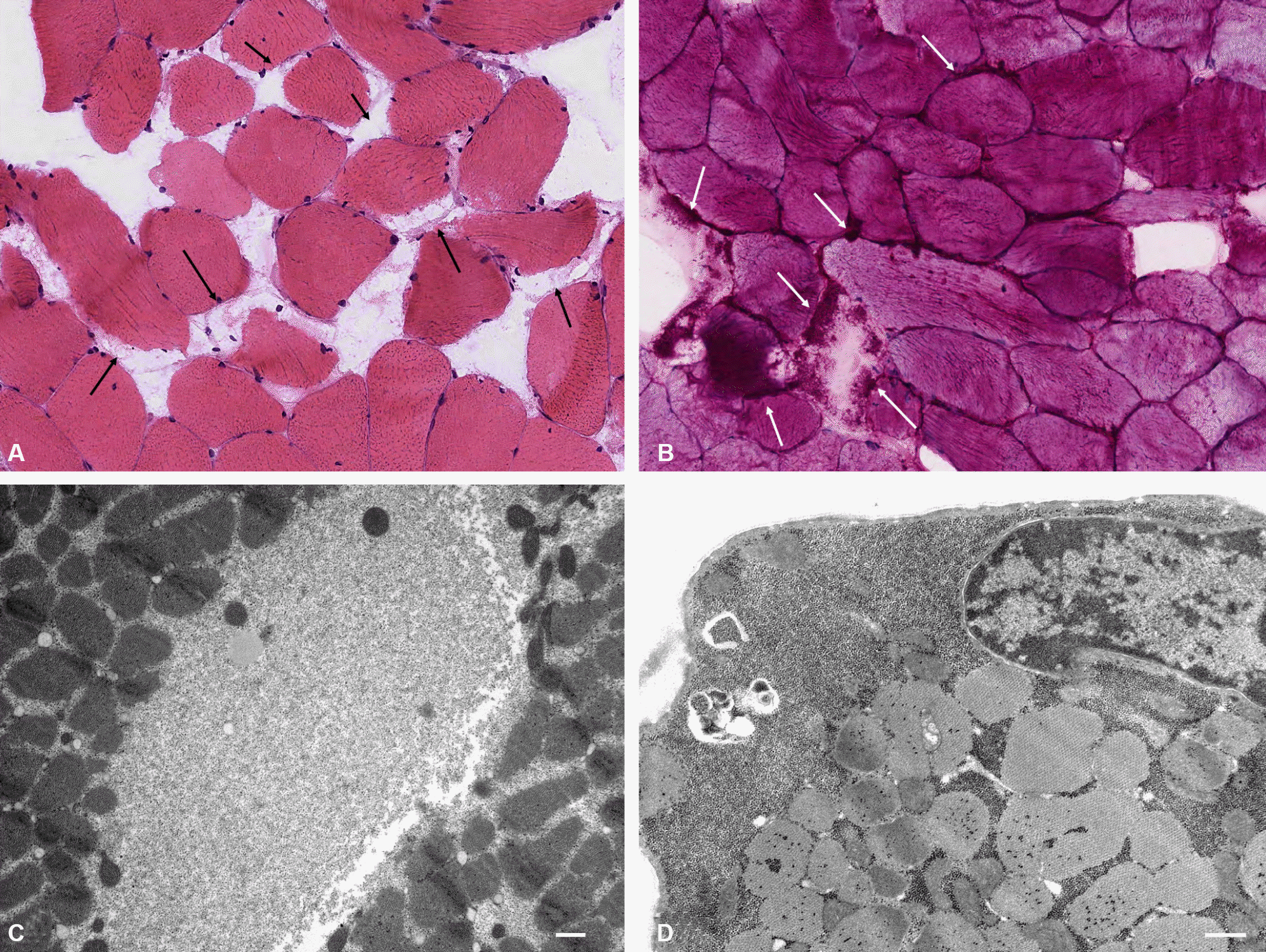Abstract
Primary metabolic myopathy as a type of congenital myopathies was first described by McArdle in 1951. Glycogen storage disease is a disease caused by genetic mutations involved in glycogen synthesis, glycogenolysis or glycolysis. Several types of glycogen storage disease are known to cause metabolic myopathies. We report a case of adult onset metabolic myopathy with glycogen storage. (Korean J Clin Neurophysiol 2014;16:81-85)
Go to : 
REFERENCES
1.Burr ML., Roos JC., Ostor AJ. Metabolic myopathies: a guide and update for clinicians. Current opinion in rheumatology. 2008. 20:639–647.

2.Haller RG., Vissing J. Spontaneous “second wind” and glucose-induced second “second wind” in McArdle disease: oxidative mechanisms. Arch Neurol. 2002. 59:1395–1402.

3.Haller RG., Vissing J. No spontaneous second wind in muscle phosphofructokinase deficiency. Neurology. 2004. 62:82–86.

4.Toscano A., Musumeci O. Tarui disease and distal glycogenoses: clinical and genetic update. Acta myologica: myopathies and cardiomyopathies: official journal of the Mediterranean Society of Myology/edited by the Gaetano Conte Academy for the study of striated muscle diseases. 2007. 26:105–107.
5.Noel N., Flanagan JM., Ramirez Bajo MJ., Kalko SG., Mañú Mdel M., Garcia Fuster JL, et al. Two new phosphoglycerate kinase mutations associated with chronic haemolytic anaemia and neurological dysfunction in two patients from Spain. British journal of haematology. 2006. 132:523–529.

6.Berardo A., DiMauro S., Hirano M. A diagnostic algorithm for metabolic myopathies. Current neurology and neuroscience reports. 2010. 10:118–126.

7.Toda G., Yoshimuta T., Kawano H., Yano K. Glycogen storage disease associated with left ventricular aneurysm in an elderly patient. Jpn Circ J. 2001. 65:462–464.

8.Andersen ST., Haller RG., Vissing J. Effect of oral sucrose shortly before exercise on work capacity in McArdle disease. Arch Neurol-Chicago. 2008. 65:786–789.

9.Martinuzzi A., Liava A., Trevisi E., Frare M., Tonon C., Malucelli E, et al. Randomized, placebo-controlled, double-blind pilot trial of ramipril in McArdle's disease. Muscle Nerve. 2008. 37:350–357.

10.Kishnani PS., Corzo D., Nicolino M., Byrne B., Mandel H., Hwu WL, et al. Recombinant human acid alpha-glucosidase - Major clinical benefits in infantile-onset Pompe disease. Neurology. 2007. 68:99–109.
Go to : 
 | Figure 1.Axial T1 image of Muscle MRI (3.0 T). Left upper arm (A) and left thigh (B) showed no definite atrophy or fat accumulation. MRI; magnetic resonance image. |
 | Figure 2.(A, B) Light microscopic findings of biopsied muscle. Mild size variation of muscle fibers and some sub-sarcolemmar vacuoles are observed, annotated with arrows (A: Hematoxylin eosin stain ×200. B: PAS stain, ×400). (C, D) Electron microscopic findings of biopsied muscle. Glycogen particles and fat vacuoles are accumulated in subsarcolemmal and sarcomeric areas (×2,000). |
Table 1.
Results of ischemic forearm test. Although serum ammonia level showed normal incremental response, serum lactic acid and pyruvate level remained unchanged
| Time | Lactic acid, mmol/L | Ammonia, ug/dL | Pyruvate, mg/dL |
|---|---|---|---|
| Basal | 0.7 | 65▲ | 0.5 |
| 1 min | 0.7 | 615▲ | 0.4 |
| 2 min | 0.7 | 416▲ | 0.6 |
| 3 min | 0.7 | 323▲ | 0.7 |
| 5 min | 0.8 | 241▲ | 0.7 |
| 10 min | 0.9 | 168▲ | 0.6 |




 PDF
PDF ePub
ePub Citation
Citation Print
Print


 XML Download
XML Download